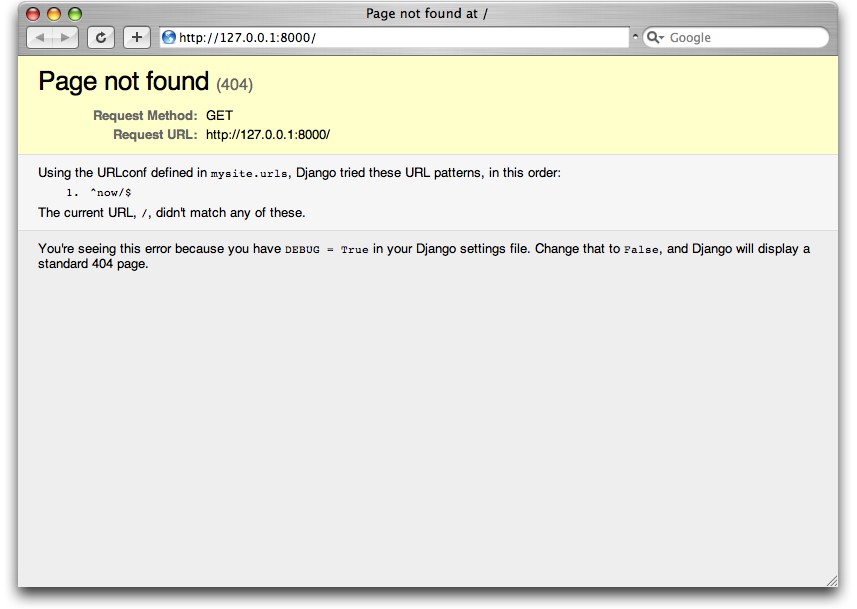In our URLconf thus far, we’ve defined only a single URLpattern: the one that handles requests to the URL /time/. What happens when a different URL is requested?
To find out, try running the Django development server and hitting a page such as http://127.0.0.1:8000/hello/ or http://127.0.0.1:8000/does-not-exist/, or even http://127.0.0.1:8000/ (the site “root”). You should see a “Page not found” message (see Figure 3-2). (Pretty, isn’t it? We Django people sure do like our pastel colors.) Django displays this message because you requested a URL that’s not defined in your URLconf.

Figure 3-2. Django’s 404 page
The utility of this page goes beyond the basic 404 error message; it also tells you precisely which URLconf Django used and every pattern in that URLconf. From that information, you should be able to tell why the requested URL threw a 404.
Naturally, this is sensitive information intended only for you, the Web developer. If this were a production site deployed live on the Internet, we wouldn’t want to expose that information to the public. For that reason, this “Page not found” page is only displayed if your Django project is in debug mode. We’ll explain how to deactivate debug mode later. For now, just know that every Django project is in debug mode when you first create it, and if the project is not in debug mode, a different response is given.

